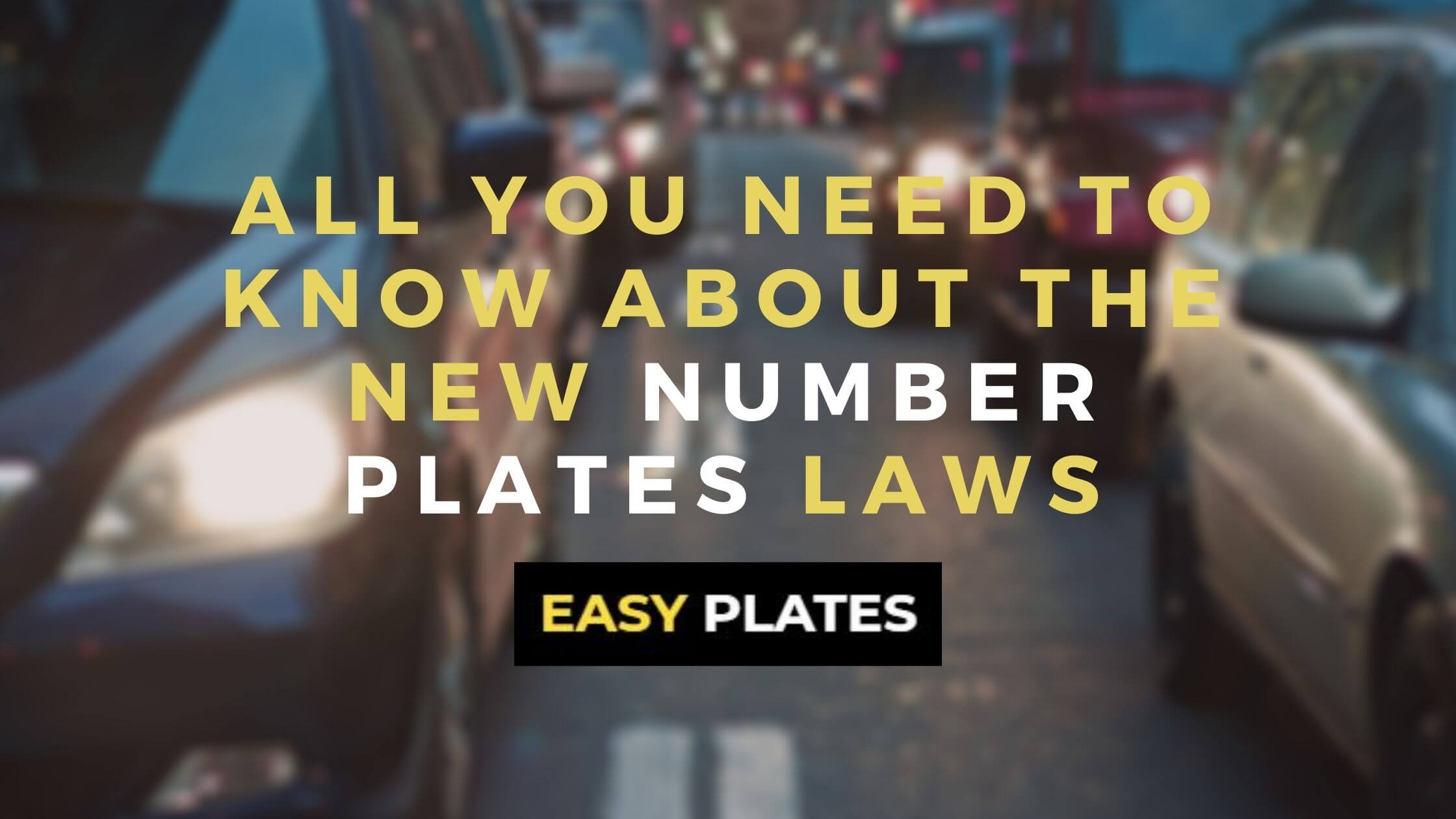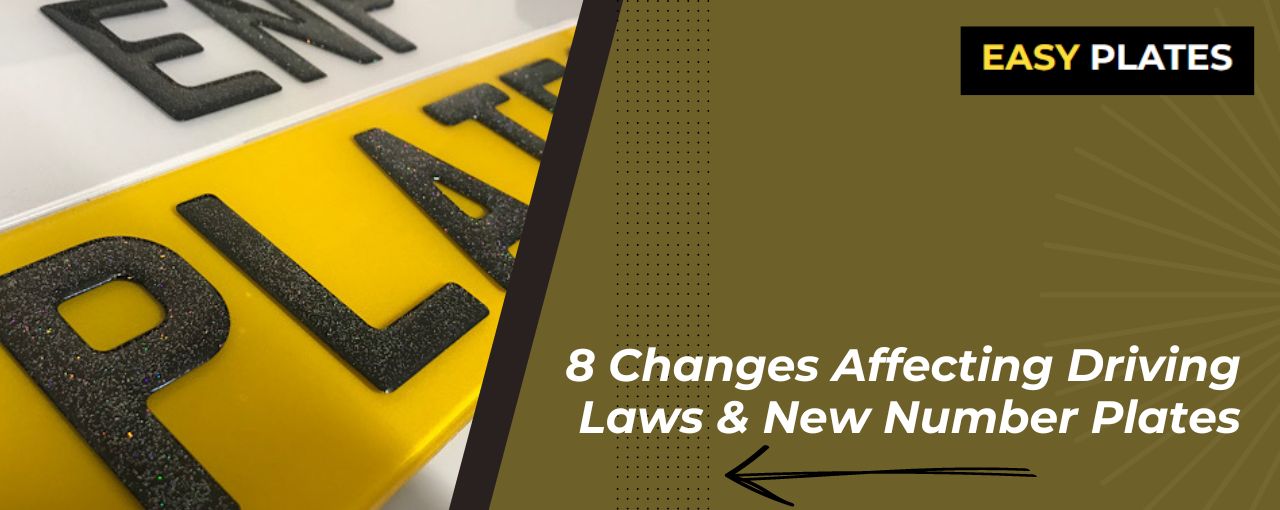
A Complete Guide to UK Number Plates
Did you know that we have just passed through a very exciting time of year? If you are a motorhead, then you likely already know what we’re talking about.
New number plates!
Yes in both March and September new cars that roll out of dealerships scream out to the world their freshness through these numerical identifiers.
In comparison to other countries, however, the UK number plate system can be quite confusing and holds not only a lot of meaning but also quite a rich history.
So come with us as we take you through all you need to know about understanding UK number plates in our number plate guide.
The History of UK Number Plates
Number plates started in the UK in the early 1900s. Before this point, cars were mainly for recreational purposes, so there just wasn’t enough of them for identification to be an issue. However, at the turn of the century, the number of cars went up, and with an estimated 20,000 of them on these shores by 1904, it was then that the idea of number plates appeared.
However, the format back then was alien to what we have now. The first letter identified where the car was registered and this was according to population, so the capital London was A and so on. The other numbers were between 1 and 9999 and were random.
The look was quite different too. They were exclusively black with stylish white lettering, something that you still may be able to see on some cars today that meet the current criteria.
Yet as you can imagine, with people’s dependence on cars increasing by the day, there was only so long until the system would start to duplicate number plates.
To counter this, they allowed for more characters, leading to the ban on racy and rude words that could pop up on potential number plates.
Now that we’re familiar with our number plate history, let’s move forward in time to what we see today.
Understanding Current Number Plates
New number plates are released on the 1st of March and 1st of September every year in the UK, meaning that at the time of this post, a new one has just come out. As we are in the year 2021, the number code attributed to this new change will be 71, and you will hear car enthusiasts referring to vehicles released at this time as 71 plates. But what does that mean?
To understand, we need to break down the current format.
Modern number plates all follow the same system. Two letters, followed by 2 numbers and a further 3 letters (e.g., FG68KLM).
Since the dawn of automobile identification in this country, the first letters have served to identify the car registration region. The combination of the two letters has allowed for more variation over the years. So for example, if a car is from somewhere like London it will have an L first and any of the letters of the alphabet could be used afterward depending on which part of the city it comes from.
Next, we have the numbers. For the first release of the year in March, these number plates will refer to the year itself. So cars registered in March 2022 will be 22 plate cars. The second release, however, adds 50 onto the number, hence us in 2021 having 71 plate cars also.
The last three numbers are random and allocated to the dealer.
Another thing that you may be able to pick up on is their appearance. Since 1973, front number plates have been white and back number plates yellow. They also have a set font called Charles Wright 2001.
This number plates format has been in place since 2001. But why the need for a change?
The Great Number Plate Rush
While the appearance prior to 2001 wasn’t much different (1 letter 1-3 numbers and 3 random letters, e.g., R66UTP), the rollout and significance of the first letter was.
From August 1983, what was known as the prefix number plate system was in place. Every year, a new number plate was released, starting with A of that year. The issue?
Vanity, plus the age-old problem of running out of combinations.
You see, if you were in the market for a new car, you would probably like for it to be obviously new. The best signal of that was it having the latest number plate on it. This meant that there was a yearly surge in August for new cars.
They tried to prevent the rush by making the release twice a year in 1999, but that didn’t prevent the problem.
Therefore in 2001, the change was made to the system that we (and hopefully you) are now familiar with today.
Exceptions and Rarities
While most number plates seen today have a similar format, every now and then those eagle-eyed among us will be able to spot what may seem to be anomalies in the system. But everything has its reasons, and no number plate guide would be complete without us touching on some of them.
The first thing to note is that you won’t see the letters “I” and “O” on a number plate. Also, since 2001, Z is only permitted in the random letter selection at the end. This is due to these letters potentially being mistaken for others.
Number plates starting with the letter Q are for specific types of vehicles or ones where the age or identity is not clear.
It is also possible to see plates that have three numbers, the letters D or X, and then a further 3 numbers. These are reserved for diplomats and their accredited staff.
Our last word is on personalized number plates. They are legal, but they do need to stick within certain guidelines to be so. The biggest rule is that you cannot adapt your plate to make your car look younger than it is. So, for example, you couldn’t make a B out of 13 if the car was older than that date.
Number Plate 101
Who knew that the world belonging to a humble license plate number could be so rich in history and facts? Yet, as we have seen there is much behind the characters that identify our vehicles.
That is the reason that we at Easy Number Plates are so passionate about number plates. We work hard to make sure that our customers are provided with the best quality plates around, whether they be standard replacements, gel, or vintage.
Get in touch with us to see how we can put the finishing touches on your vehicle today!





